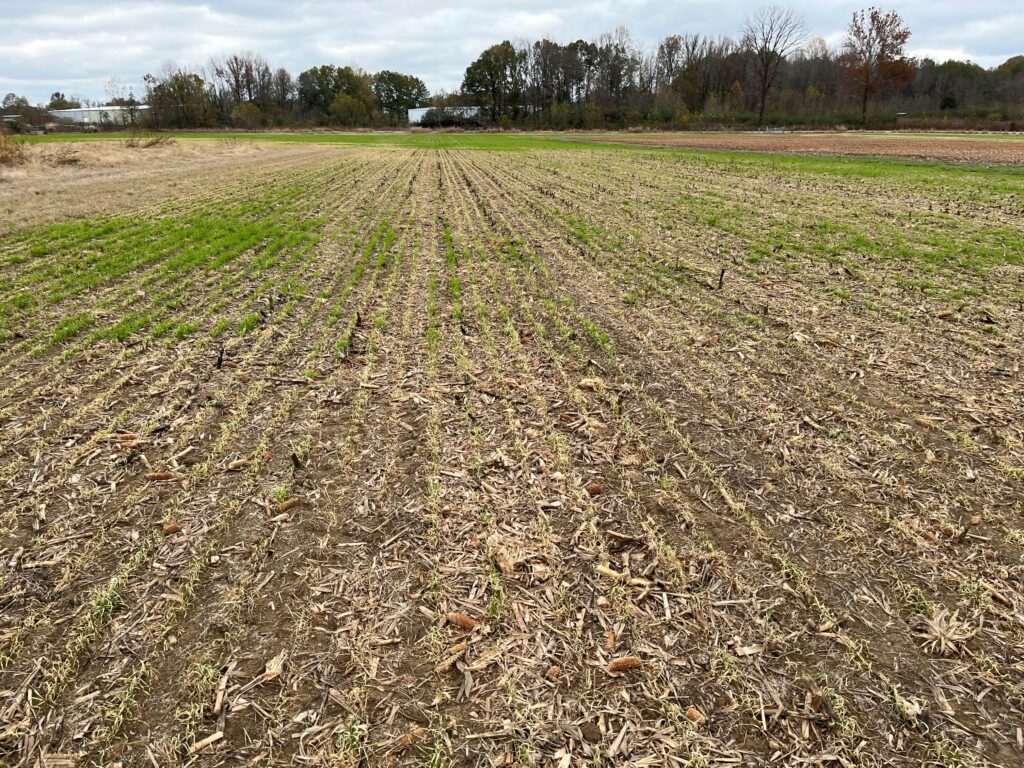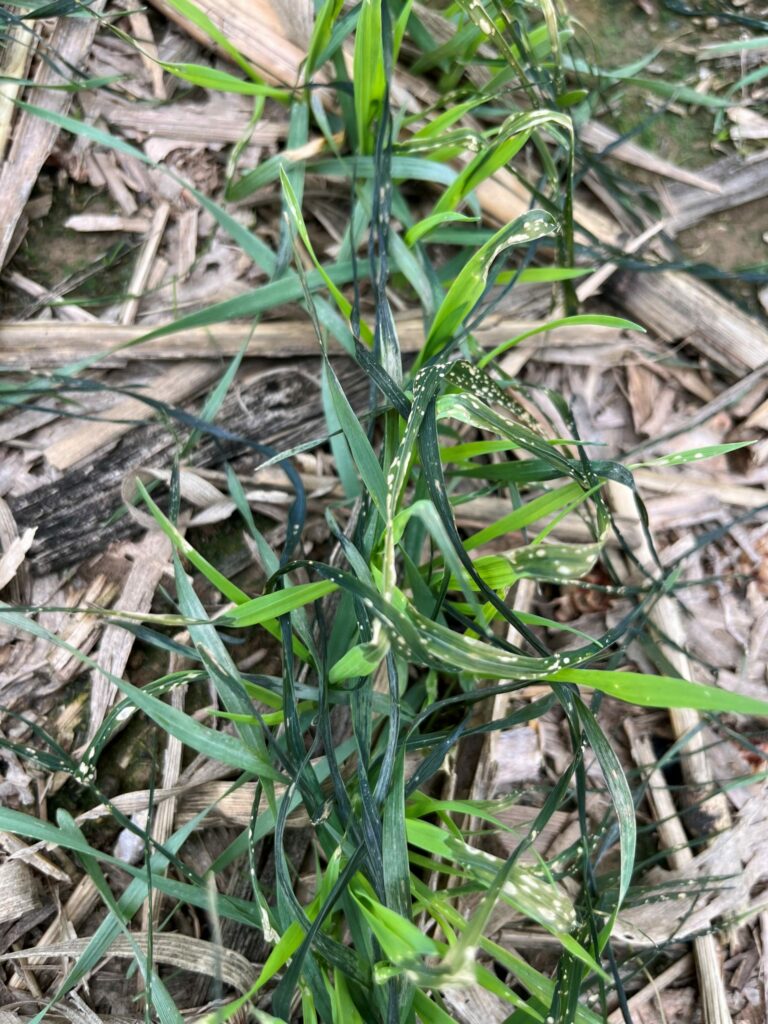
We have gotten several reports of wheat showing metribuzin injury this week. In some cases it clearly was caused by metribuzin (Picture 1). In other cases, the visual injury would suggest frost damage (Picture 2).

There was a sea change this year in weed control in wheat with most applying their main herbicide application in the fall rather than the spring. This has been our recommendation for some time as all weeds are easier to control as they emerge or when they are small rather than in the spring when they have become well established. The drawback to fall applications other than finding the time to apply, is potential crop injury. This is particularly true for metribuzin.
Metribuzin was the most common herbicide applied to wheat this fall. The reason for this is Poa had emerged with the wheat and it is the best herbicide to take out small emerged Poa. It was the centerpiece of a tankmix that often included Anthem Flex or Zidua. In other cases, it was mixed with Finesse, Harmony or dicamba.
It is very tricky to predict wheat injury from metribuzin. There are five factors that in some combination can line up wrong to increase the chances of wheat injury. The first factor and most important is environment. Most wheat injury from this herbicide takes place when there is an abrupt switch from warm weather to wet and cold. The second factor is soil type. Metribuzin is much more likely to injure crops growing on sandy areas of a field or more commonly in Tennessee, eroded clay hill sides. Wheat growing on soils that have more silt present rarely show injury from metribuzin. The fourth factor on the degree of injury one could expect from this herbicide is the inherent tolerance of the wheat variety. Finally, the fifth factor is the metribuzin rate.
Of those factors, wheat producers have control of only variety and herbicide rate. It is very hard to get good data on metribuzin tolerance for different wheat varieties. The reasons for this are that when we have put tests out we often do not get the weather at the location to show injury, even at higher rates. This coupled with the rapid turnover of wheat varieties makes generating this type of data very difficult.
The other factor is rate. There is a very fine line when applying a rate across all fields. The rate needs to be high enough to consistently control Poa but at the same time not cause crop injury. Typically, 2 ozs of a 75DF formulation is safe across most fields in Tennessee. However, on soils that are more productive that rate is often not enough to consistently control Poa. A 4 oz rate will provide the most consistent Poa control but that rate on sandy soils or eroded hill sides will often cause crop injury. As such most apply 3 ozs which is about as close as one can get to a happy medium. However, even that rate can cause injury, particularly at field ends where the sprayers apply a heavier rate as they slow down, sprayer overlap areas, or on less productive areas of fields.
The question of the day is will the wheat recover? It is too early to tell right now in most cases. In the wheat I have looked at the crowns still appear green though the leaves are brown. The plants still have a chance to recover so give the wheat a couple weeks and then make an assessment on the wheat stand.

